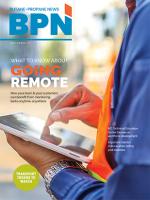
Often, stereotypes create a bad rap for the group they are focused on, especially those that refer to age. Stereotypical baby boomers are goal-centric, team-oriented and have a strong work ethic. They may have worked at the same company for the majority of their careers. At the opposite end of the spectrum, stereotypical Generation Zers have short attention spans, are addicted to technology, can’t handle face-to-face interaction and are job-hoppers.
Some of the stereotypes may be true. I am a part of Generation X, and yes, in my day, I was a cynical latchkey kid who listened to grunge music. Luckily, iPhones weren’t around then to capture my antics as a West Texas girl wearing flannel and trying to resemble someone from Seattle, Washington.
The term “baby boomers” refers to the post-World War II generation, born between 1946 and 1964. Generation X represents people born between 1965 and 1979/1980. Generation Y, also known as millennials, spans the birth years of 1981 to 1997. Anyone born between 1997 and 2015 is considered a member of Gen Z.
As I stated before, baby boomers typically remain at their companies well past the normal retirement age due to a strong sense of loyalty and an inherent need to work. This has caused some stagnation in the top ranks as boomers have not been retiring. This lack of upward movement has given millennials and Gen Zers a reputation for job-hopping as they look for opportunities.
But today, boomers are leaving the workforce at a staggering rate. According to the Pew Research Center, on average, 2 million boomers have retired each year since 2011. That number rose dramatically in 2020 to 3.2 million. Within two years, millennials and Gen Z will make up over 52% of the workforce. As leaders, does this mean the workforce is trading its skilled hard workers for the entitled and flaky? I think not.
What Do Millennials & Gen Z Bring to the Table?
Millennials and Gen Z possess great attributes to add to your organization. Besides the obvious — that they are quick to adopt technology — they are conscientious, socially responsible and inclusive. There are slight differences between what motivates millennials and Gen Z when it comes to the workplace. Many millennials are motivated by recognition and gratitude for what they accomplish. Many Gen Z employees are motivated by financial security and meaningful work.
Career-Driven
According to a recent survey, 76% of Gen Z respondents described themselves as responsible for driving their career, and 58% are willing to work nights and weekends for higher pay. This number is slightly lower for millennials (45%), who place greater value on having experiences. Yet, this is still greater than Gen X and baby boomers, only 40% or lower of whom are willing to work overtime. In hiring millennials or Gen Z, you may gain a more driven workforce.
Purpose Over Pay
When it comes to salary, 74% of Gen Z and 70% of millennials are motivated more by the purpose of the work than by the paycheck. While salary is important to this group, it’s not the only thing driving them to work hard, as opposed to 66% of Gen X and 67% of boomer respondents.
In other words, these young people want to care about the work they do. So, it’ll be important for you to help keep Gen Z and millennials engaged in the mission of what you’re doing if you want to keep them engaged in the job.
Technological Powerhouses
Both of these generations were raised with technology. Harness the strengths that come with that. Many from older generations are not always looking for the fastest and most efficient way to use technology. Younger generations bring creative, out-of-the-box problem-solving on a level the previous generations have not seen. As a personal story, I recently enlisted a millennial to help me with revising and streamlining a process that was time-consuming and costly. He was able to make the process more efficient and more powerful.
5 Tips for Strong Leadership & Retention
When it comes to leading, managing and mentoring new arrivals to today’s cross-generational workforce, much of your leadership expertise still applies. However, to place a little extra focus on improving employee relationships and outcomes, there are a few things to keep in mind. The following are five best practices to help you guide and grow both the millennial and Gen Z members of your team.
1. Adapt
A key element to any leadership is the ability to adapt. If you are using the same leadership style that you did 20 years ago, you are not growing as a leader. What motivated your generation is not necessarily what motivates others. This is also true from person to person within a generation. Continually strive to expand your leadership style to care for a wide range of talents and personalities.
2. Listen
A second key element of leadership is the ability to listen. If you don’t understand your team’s values, goals and aspirations, you need to ask them. What is it that motivates them to come to work each day? What do they need to be successful? Actively listen to their responses and be prepared to act. The fact that you are providing time for them and listening is highly valued in both generations. Being vulnerable enough to ask these questions of your team shows empathy, honesty, transparency and genuine leadership.
3. Communicate
Both generations value clear communication and feedback. In many situations, you may feel that you are overcommunicating, which will typically not be the case. Millennials and Gen Z also take feedback in different ways. While millennials may require encouraging feedback, most Gen Zers will request straightforward feedback. Learning how to effectively communicate on an individual basis shows your flexibility as a leader.
4. Mentor
Both of the newer generations value mentorship and on-the-job training. Research has shown that millennials who are mentored are twice as likely to stay with an organization for more than five years. Millennials and Gen Z are both highly motivated to learn something new every day, so be a resource for them or connect them with other resources that will enable them to receive training and continue their learning continuum.
5. Trust & Work Toward Autonomy
Both of these generations have an inherent need for independence and autonomy. This is why so many startups and disruptive enterprises have come from these generations.
To maintain them in your workforce, you need to immediately develop mutual trust. It is said that trust is a two-way street, but you have to get to the on-ramp first. As a leader, you need to show trust to earn trust. And with trust established, you’ll be able to allow more freedom to employees who are part of these generations.
For instance, many of the younger generation like the flexibility of working from any location. But without trust, your tendency as a leader is to have them in the cubicle next to you so you can look over their shoulder. Establishing trust and mutual respect produces loyalty and allows them to prove that they are capable of greater flexibility, independence and autonomy.
My interactions with millennials and Gen Z have been outstanding. I have had the opportunity to work with them in corporate America and in my time as a university lecturer. Many have a fire and drive that is sometimes absent within my generation. As a leader, it is your responsibility to understand what drives each individual so you can properly motivate and effectively lead them.


